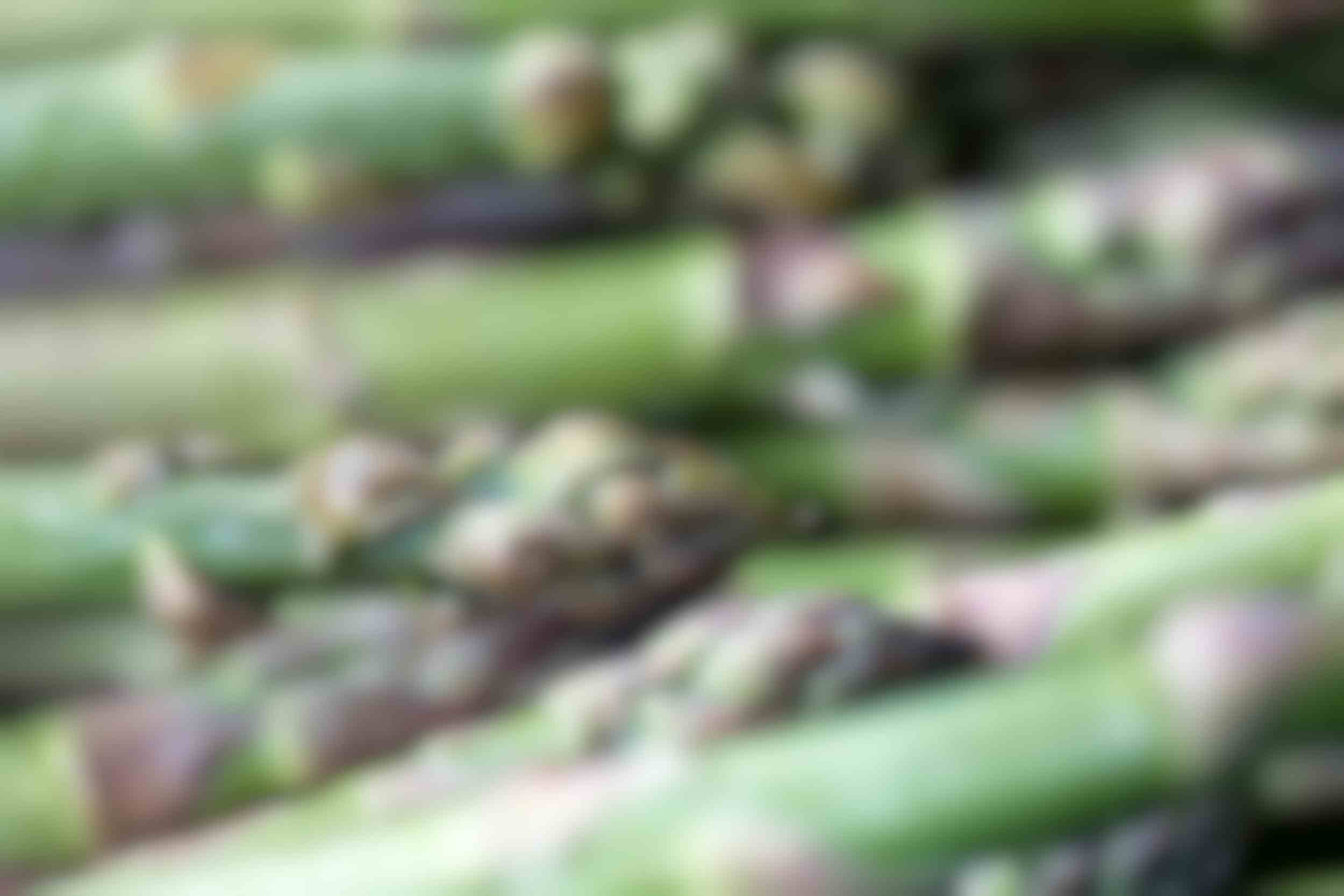Up here in Bottmingen, just a pleasant Sunday stroll from the Restaurant Stucki Basel, the wind whistles over the asparagus fields. Snugly wrapped under protective plastic, the asparagus thrives here above the city of Basel. Here and there you spot an asparagus spear stretching towards the heavens, almost begging to be picked. These are the fields of asparagus producer Thomas Wiesner. Tanja Grandits comes up here with her daughter for a Sunday walk among the fields, buys choice quark at the farm store – and also buys asparagus for her restaurant from Thomas Wiesner.
Today, for a change, the award-winning chef is wanting to harvest her asparagus herself. In wellington boots and good spirits she stoops low over a ridge of earth. It is obvious at a glance that she and Wiesner get on really well. They share a love of the good primary product. Taking great care, the farmer digs about 25 cm into the soil along the length of the asparagus, exposing it neatly, to allow Grandits to position her asparagus knife and sever the stem. It takes a good deal of dexterity to cut the spears neatly. The spear grows out of a rhizome, its roots spreading in every direction beneath the ground. Focused attention is called for to make a straight cut every time. Then the hole is refilled with earth, and in a few days new shoots of asparagus can be seen poking out of the earth.
Thomas Wiesner got into asparagus growing quite by chance. For his pride and joy is actually “Beeriland”, or Berry Land, his fields of sweet raspberries, strawberries and blackberries. An asparagus grower he knew pointed out to him that his fields were perfect for asparagus: their configuration is ideal for planting long rows of asparagus crowns, and the soil up here is loose, sandy and not too wet. So he embarked on the adventure – and has never regretted it. Perseverance has always been his most important companion. Once prepared, a field takes all of four years until the first crop is ready. Four years of loving care and attention – without the thought of any profit. Cultivating asparagus calls for hard work and patience in equal measure.
But Wiesner also has to listen to nature. If the weather is too cold, the asparagus grows in slow motion. If it rains too much, he is out every hour to prevent his fields from getting waterlogged, which would be deadly for the plants. But if it is too warm, the asparagus spears virtually shoot out of the earth under the warmth of the black sheeting and must be harvested swiftly.
It is a natural cycle that is no longer understood today, thanks to the imports from abroad. “You can get asparagus from Mexico as early as January. And of course there are customers who want my asparagus long before it is ready for harvest.” Yet that is precisely the most important communication that has to take place. No-one knows better than the farmer when the vegetable has reached the peak of its flavour: when the asparagus tastes best and has absorbed enough goodness from the soil and enough sun from the sky, to be be harvested at exactly the right point in time. It pains Wiesner’s soul when this is not properly understood.
Nature has taught him to wait and be patient. “There is nothing to be gained by harvesting vegetables or fruit just because you want to serve berries at Easter. The same is true for asparagus spears – you have to wait for the really good ones.” And he has never yet missed the perfect moment, he says. Every day he examines with scrupulous precision how the asparagus is doing. An announcement on the company’s answering machine even lets the customer know the state of the harvest.
For Tanja Grandits, talking to her suppliers is something she does as a matter of course. “The producer is so close to the product, he knows when it has developed its full flavour.” – When the white asparagus is so tender that its succulent tips seem to almost melt in your mouth. Green asparagus has a somewhat more intense taste: growing out above the surface of the soil, it gets so much light that it not only turns green, but also contains more vitamin C and beta carotene.
